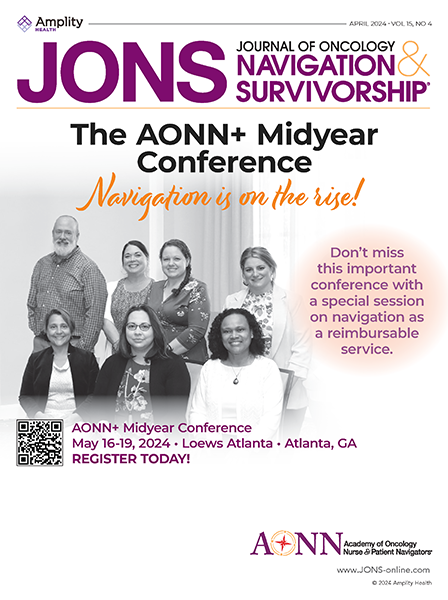Objectives: Define financial toxicity in cancer patients; determine the value of financial navigators (FNs) to patients; evaluate costs/benefits of financial navigation to healthcare organizations; evaluate the utility of toolsets for financial navigation program management; current staffing benchmarks and recommendations.
Methods: Cancer patients choose multiple ways to afford their treatment, which may include making the decisions to not fill prescriptions, not take medications as prescribed, or change their lifestyle to choose groceries instead of treatment. Unfortunately, these choices related to financial toxicity have a significant impact on the patient’s outcome and family. Attendees will learn from the presenter’s experience at 3 different cancer centers in justifying, implementing, and utilizing an FN. Several tools are available to help FNs with this aspect of care, and attendees will hear about these tools. Some benchmarks and metrics will also be shared.
Results: FNs can manage ~600 new patients/year effectively. FNs free up clinical navigator time. Patients report several benefits from FNs, including improved adherence to physician and treatment appointments, and lower stress levels related to their diagnosis. Organizations also note several benefits from FNs, including reduced no-show rates, lower denials/write-offs, improved collections in oncology, and improved patient satisfaction scores. Electronic tool sets provide efficiencies gained by sharing information with the patient and the entire care team, secure communications with patients, 1 repository/database for patient navigation information, and interoperability with electronic medical record systems.
Conclusions: Recommendations for best practices based on the presenter’s experience at 3 organizations are the following:
- Every cancer program needs an FN
- FN is a critical part of the whole navigation team
- FNs more than cover their cost through many different ways
- FNs help streamline the complicated and time-consuming preauthorization to claim adjudication process
- The costs associated with an FN are an investment in the oncology program
- Patient satisfaction scores have been shown to improve through FN programs
- Several software applications are available to help FNs and patient navigators streamline their work and communication
- Benchmarks and metrics are available and must be used to ensure the program is successful and improving
- FNs are a necessity in oncology care




